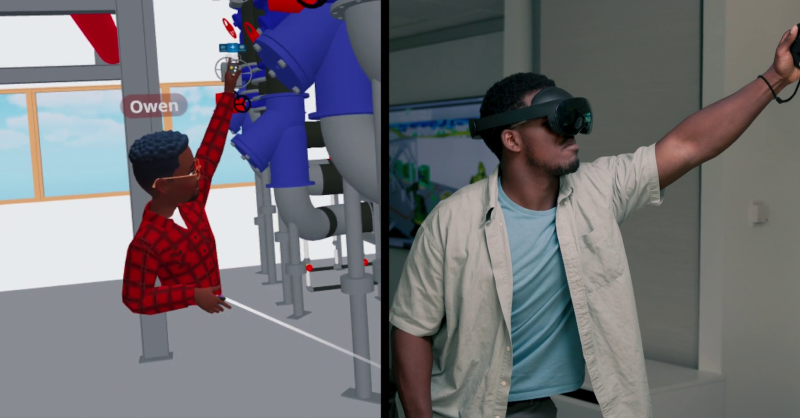Virtual visionaries: New interview series highlighting VR in design and construction
Today we're thrilled to launch "Virtual Visionaries," our exciting new web series that delves into the transformative impact of virtual and augmented reality (VR/AR) in the design and construction industries
Introducing Virtual Visionaries
Today we're thrilled to launch "Virtual Visionaries," our exciting new web series that delves into the transformative impact of virtual and augmented reality (VR/AR) in the design and construction industries. Hosted by Angel Say, CEO and cofounder of Resolve, this series brings you conversations with industry pioneers who are at the forefront of technological innovation, revolutionizing how buildings are conceived, designed, and constructed.

Why Virtual Visionaries?
The $13T construction industry is one of the largest and most complex sectors, with projects often facing significant challenges such as delays, cost overruns, and rework.
Over $600B are lost annually due to construction rework around the world. As we strive to address these challenges, it becomes increasingly clear that traditional tools and processes are no longer sufficient. This is where VR and AR come into play. These technologies offer new opportunities to visualize, analyze, and refine building designs before any physical work begins, significantly reducing errors and improving efficiency.

Virtual Visionaries aims to show how these cutting-edge tools are being used by forward-thinking professionals to tackle some of the most pressing issues in construction. We have heard too many conference talks that present VR as a only a marketing tool or only highlight the one time a VR headset was used in a conference room and then put away on a shelf to collect dust.
We are going to be diving into the details of deployments that are using VR regularly, for day to day work, at scale, and on some of the most impactful projects around the world. From small retrofits to multi-billion dollar facilities we want to show you VR BIM reviews come in all shapes in sizes and we want to help you find the workflow that best suits your projects.
By sharing real-world examples and expert insights, the series aims to shed light on how easy and impactful using VR can be nowadays.
Episode 1: The Future of Pharmaceutical Manufacturing with VR
In our debut episode, Angel sits down with Viktor Nemet from Pharmaplan, to discuss the role of VR in the design and construction of pharmaceutical manufacturing faciltiies. Viktor, who has been at the forefront of using VR in his projects, shares his experiences and insights on how this technology is transforming the way pharma factories are designed and built. From AutoCAD to Revit to Navisworks to VR - Viktor is an expert in using digital tools to improve the delivery of complex projects.
Viktor highlights the unique challenges faced in pharmaceutical construction, such as the need for cleanroom environments, walkable ceilings and complex equipment layouts. Getting these things wrong during the design phase has a huge downstream impact on construction and operations cost.
With VR, Viktor and his team are performing virtual walkthroughs that helps spot issues earlier than before.
The Importance of "Virtual Visionaries"
As the construction industry continues to evolve, the adoption of innovative XR technologies is crucial for staying efficient and delivering high-quality projects. "Virtual Visionaries" is more than just a series; it's a platform for sharing knowledge, sparking dialogue, and driving change in the industry. By highlighting success stories and best practices, we aim to empower professionals to embrace these technologies and harness their full potential. If you haven't started your XR journey we hope this series will inspire you to give it a try.
Stay tuned for more episodes, and don't forget to subscribe to our YouTube channel for the latest updates!
Do you want to upload your own model to review in VR? Sign up for a free trial.
Resolve builds software that makes 3D building information models more accessible so teams can find critical issues that save time and money on new construction. Resolve's Wellington Engine can render large BIM files on the standalone VR devices making it a scalable, easy to use solution for project teams. Resolve is used by leaders spanning industries like food & beverage, water treatment, data centers, biopharmaceuticals, and green energy.
